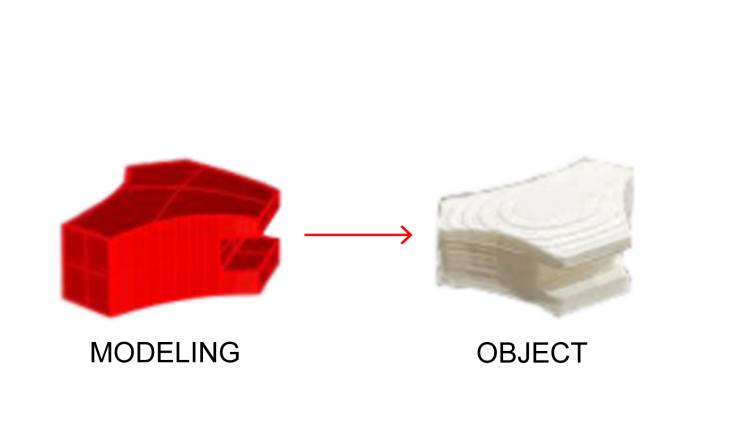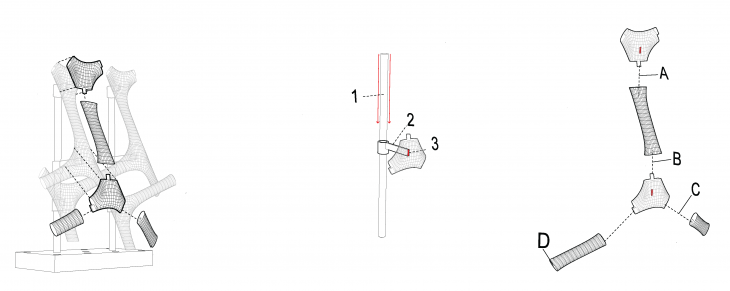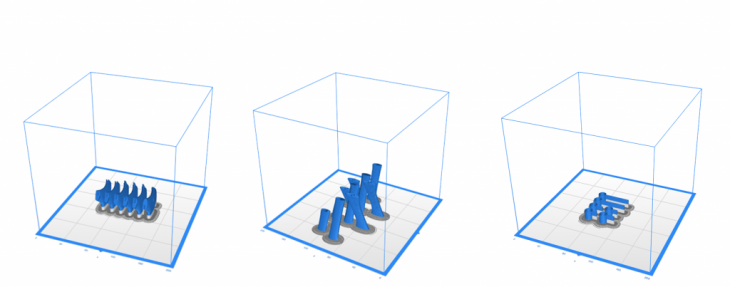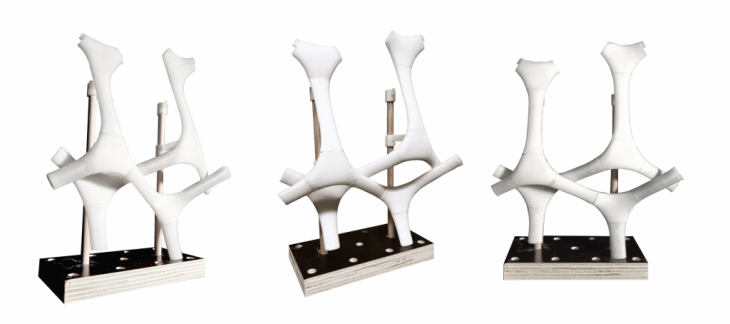Arachne: 3D Printed Facade

Arachne is a 3D fabricated façade system designed by Lei Yu and Yanxin Wang. The facade uses 3D printing to realize component parts [PLA plastic] and the composition as a whole. Arachne as a free standing façade covers 308 square meters, is composed of 2218 3D printed components and totals 5 tons of plastic material.
The conceptual articulation represents an advancement of façade design, which realizes mass produced components to a standardized cladding. Such a design can only be imagined through digital modeling, fabrication and generative design strategies.
Fabrication Process and Learnings


The material [PLA] and slicing [Cura] offered many advantages to simulating a small scale prototype that best realized the 3D model components. The slicer settings cross-reference the demands of accurately interpreting a water tight model and threshold minimums that designates units of scale in millimeters. By understanding the strengths of the 3D printer, interlocking components can become imagined to function within parameters designated through fabrication. The modeling process began with the digital scale, and then fabrication to test the deliverables set by the base dimensions.
Diagrams and Technical Drawings
The 3D axon assembly demonstrates a study of the connection to the base. Four connections where made with the components, which provided stability by means of connecting to the base. Connection [1] demonstrates the 3D printed connector to the base. Component [2] is an additional 3D printed part that becomes inserted to the connector [3].

The connection catalog was critical in imagining a means of producing a functional set of parts. Connection [A], demonstrates the component being inset into a void designed within the extender. Connection [B], visualizes the transversed movement of the extender by inserting the component. Connection [C], reveals that connections could be made on the component to carry the load of gravity from the extender’s designed void. Connection [D] repeats this opportunity, depending on the gravity load and transverse movement of the component.
Production Data


For the final fabrication assembly model the Machine: Zortrax M200 was utilized. Where the final material was ABS plastic and offered optimal print time, while retaining rigidity to connect individual pieces. The final prints revealed that orientation, structural support and scale are critical to completion. Most important to all of these findings is knowing the thresholds of the 3D printer, that allowed for connections to become designed as an additional criteria to the form finding process. The overall print time was totaled at 9 hours.

Link: Computational Design Study
Arachne: 3D Printed Facade is a project of IAAC, Institute for Advanced Architecture of Catalonia developed in the MAA01 2020/21 by Students: Rigoberto Moreno, Elena Petruzzi, Sara Al-Mulhem and Faculty: Lana Awad, Shyam Zonca, Ricardo Mayor